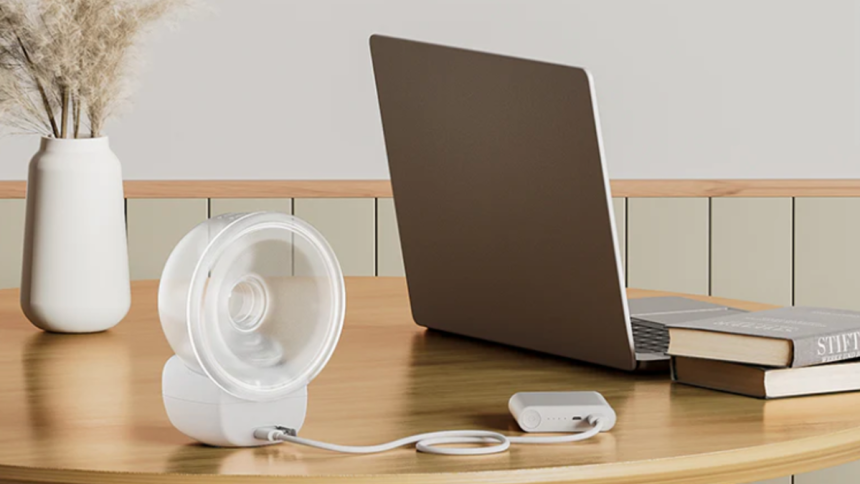Breastfeeding is a rewarding yet sometimes challenging experience, and understanding how breast pumps work can greatly ease the journey. In this article, we’ll explore the science behind milk expression and how breast pumps help manage and enhance breastfeeding. Whether you’re a new mom or simply curious, this guide will help you make informed decisions to support your feeding goals.
Breast pumps operate using a combination of suction and pressure to mimic a baby’s natural sucking rhythm. With options ranging from manual to electric and hospital-grade models, choosing the right pump depends on factors like usage frequency, comfort, and lifestyle needs. Let’s dive into how each type works and what might suit you best.
Enhanced Performance and Efficiency
Understanding the mechanics of a breast pump can lead to better milk expression outcomes. Below are key aspects that can affect performance and efficiency.
Longer Battery Life
Having a breast pump with an extended battery life makes a difference during pumping sessions. This is handy during long trips or night sessions. With fewer interruptions to recharge, I find it easier to maintain a consistent pumping routine.
Increased Power and Acceleration
A breast pump’s suction power and speed play a crucial role in milk expression. For instance, pumps that reach speeds of 110-120 RPM can stimulate letdown more effectively. Higher power translates into more efficient milk removal. It’s beneficial when time is tight or when I want to express larger quantities quickly.
Extended Range
A breast pump’s settings can also impact its effectiveness. Models that provide adjustable suction levels allow for personalized comfort. Some users prefer softer suction for comfort, while others may require more intensity for optimal milk flow. Finding a pump that balances power and comfort is important. It can significantly affect how much milk I can express.
Maintenance and Convenience
Maintaining a breast pump shouldn’t require excessive time or effort. Models that prioritize maintenance-free operation stand out for busy parents.
Maintenance-Free Operation
Many breast pumps offer components that are dishwasher safe. I think this feature simplifies cleaning, allowing more time for other tasks. 24-hour battery life
The Momcozy S9 Pro Wearable Breast Pump offers appealing convenience with its fast Type-C charging. Despite its large battery capacity designed for all-day outdoor use (8-9 pumping sessions totaling 270 minutes), it can be fully charged in just 2.5 hours, a practical feature for busy days.
Lightweight Design
A lightweight breast pump can significantly enhance portability. Many electric models weigh under 2 pounds, making them easy to carry. Being lighter means I can pack them into a diaper bag without a hassle.
Environmental and Safety Benefits
Using a breast pump contributes positively to both the environment and safety. Understanding these advantages adds to the overall appeal of breast pumping.
Eco-Friendly Technology
Breast pumps often carry out eco-conscious features. Some models use less electricity, which helps reduce carbon footprints. For instance, solar-powered options, though rare, do exist. Reusable and recyclable materials in pump components also play a role. While manufacturers promote sustainability, always check product labels for detailed information.
Enhanced Safety Features
Safety stands out in the design of modern breast pumps. Many include closed systems that minimize contamination risks. Sealed tubing prevents milk from entering the motor, which can lower health hazards. Besides, BPA-free materials ensure chemical safety. Checking specifications like these matters as you consider a pump. Almost all reputable brands prioritize safety and offer warranties, which adds another layer of protection for users.
Cost Considerations
Understanding the financial aspects of breast pumps helps guide decisions. Costs vary widely based on type, features, and brand.
Lower Total Cost of Ownership
I often consider the long-term expenses associated with breast pumps. For example, manual pumps generally cost less upfront compared to electric ones.
Maintenance plays a role in ownership costs. Regular cleaning with dish-safe parts and closed systems can reduce contamination risks and the need for replacements. This might save money over time.
| Pump Type | Initial Cost | Average Lifespan | Maintenance Cost |
| Manual | $30 – $50 | 1 – 3 years | Low |
| Electric | $100 – $300 | 2 – 7 years | Moderate |
| Hospital-Grade | $200 – $500+ | 5 – 10 years | Higher |
Warranty and Reliability
Warranties vary between models, but many reputable breast pump brands offer solid coverage. A warranty of one to two years is common, which can provide peace of mind.
Reliability also comes from product performance. Frequent checks for functionality can prevent unexpected issues.
Do I focus on brand reputation? Yes, a good warranty paired with reliable performance often indicates a quality product.
Installation and Compatibility
Understanding the installation and compatibility of breast pumps simplifies the selection process and usage.
Drop-In Replacement Options
Drop-in replacement options for breast pumps fit various models, allowing for easy compatibility. For example, many brands provide interchangeable accessories that work seamlessly across their product lines. I often see this feature as a time-saver for busy moms. Not having to buy new parts when switching pumps is beneficial.
Here’s a brief list of popular drop-in replacement accessories:
● Breast shield sizes
● Valve assemblies
● Milk storage bags
These items enhance flexibility and personalization, catering to individual pumping needs.
Modular and Flexible Configurations
Modular and flexible configurations present significant advantages for users. The ability to customize a breast pump setup accommodates different pumping styles and preferences. For instance, some systems offer detachable components, making cleaning straightforward and efficient.
Consider these key features:
● Adjustable flange sizes for comfort
● Configurable pumping setups for single or double pumping
Compatibility with various bottle types
These configurations adapt to changing situations, eventually making the pumping experience smoother. Have you thought about how a modular design can impact your routine?
Conclusion
Understanding how breast pumps work—from mimicking a baby’s natural sucking rhythm to adjusting suction settings—can significantly improve milk expression and overall comfort. Each pump type—manual, electric, or hospital-grade—has unique benefits depending on how often and how much you need to pump.
Key features like suction power, adjustable settings, battery life, and safety components all play important roles in efficiency and ease of use. While choosing the right pump may take some trial and error, investing in one that fits your lifestyle and comfort needs can make the breastfeeding journey smoother and more manageable.
Lynn Martelli is an editor at Readability. She received her MFA in Creative Writing from Antioch University and has worked as an editor for over 10 years. Lynn has edited a wide variety of books, including fiction, non-fiction, memoirs, and more. In her free time, Lynn enjoys reading, writing, and spending time with her family and friends.















